AC motor magnetism and electromagnetism are a critical part of overall operation. All magnets attract and hold metals such as iron and steel. A magnet will maintain a “north-south” position if it’s free to move (like the needle on a compass).
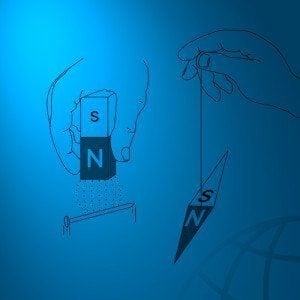
Magnetic Lines of Flux
An invisible force, known as “lines of flux,” allows magnets to attract iron or steel metals. Lines of flux produce an invisible magnetic field that create two opposing forces on magnets. We call these forces north pole and south pole. On a magnet, invisible lines of flux depart from the north pole and travel to the south pole. While we can’t ever see the invisible lines of flux, there are ways to visualize the effects of magnetic fields. To do this, place paper over a magnet and sprinkle iron filings on top. Then watch as the iron filings adjust themselves over the invisible lines of flux.

If you trace lines on the paper that follow the arrangement of the iron filings, you’ll see a closed loop that moves from outside the north pole, into the south pole, and back to the north pole through the magnet. Closed loops like these are always formed by magnetic lines of flux.
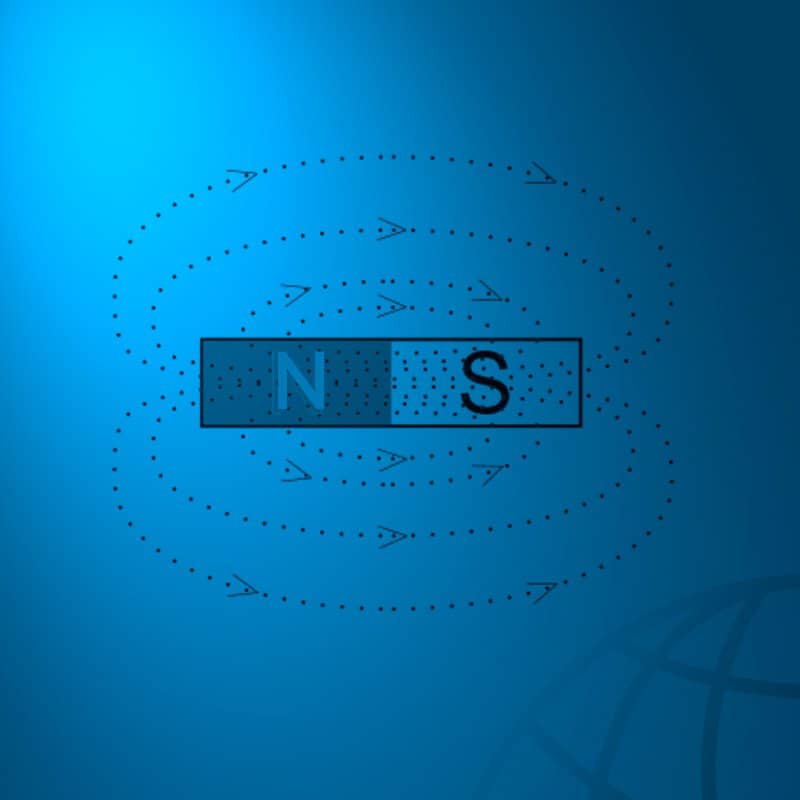
Opposite Poles Attract
It’s important to note that the interaction between magnets are influenced by the polarity of the magnetic field. For instance, if you took two magnets and placed the opposite poles together, the lines of flux will combine and pull as one.
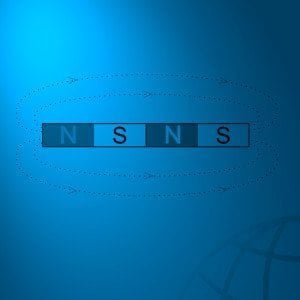
Same Poles Repel
On the other hand, if you took two magnets and placed the same poles together (e.g., both south poles facing each other), the lines of flux create a force that repels or pushes the magnets. This magnetic field phenomenon of attracting and repelling is a vital characteristic in operating AC motors.
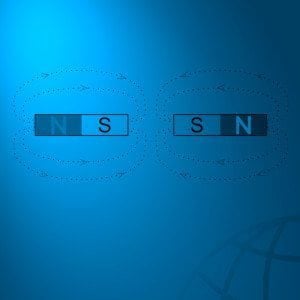
Electromagnetism
Let’s take a closer look at the role of magnetism in the operation of AC motors. First, let’s examine a conductor of electricity. When an electric current flows through it, a magnetic field is created and surrounds the conductor. As with a natural magnet, the formed magnetic field consists of lines of flux. Note that when the current flow strength and size increase or decrease, the magnetic field will also increase or decrease.
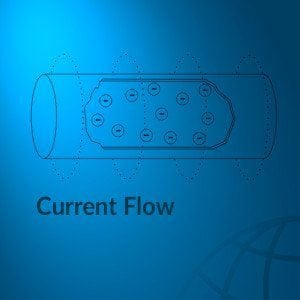

Left Hand Rule for Conductors
The “left hand rule” for conductors refers to the relationship between the direction of current flow and magnetic field. If you clutch a conductor that carries a current in your left hand and point your thumb in the direction of its electron flow, you can be sure that your fingers are pointing in the direction of the magnetic lines of flux.

When the electron flow moves away from the viewer (+) the lines of flux move counterclockwise around the conductor. When the electron flow moves towards the viewer (•) the lines of flux move in reverse (clockwise) around the conductor.

Electromagnet
When a conductor is wound into a coil, an electromagnet can be produced by applying a DC voltage. The coiled conductor allows for the current flow to produce lines of flux that combine into a larger, stronger magnetic field. The area in the center of the coil is called “the core.” In the diagram below, the core is just air.

Adding Iron Core
To maximize the flux conductor of this electromagnet, a soft piece of iron can be added in place of the air core (at the center of the coil). Adding an iron core increases the number of lines of flux, which strengthens the magnetic field.
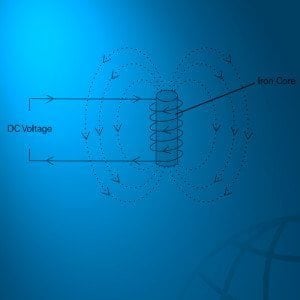
Amount of Turns
Another way to maximize the magnetic field in this DC electromagnet is to rotate the iron core inside the coiled conductor. Increasing the amount of rotations will increase the magnetic field power.

Changing Polarity
An electromagnet shares equal traits with a natural magnet in regards to magnetic field (e.g., they both have a north pole and south pole). Yet, when a electromagnet’s current flow changes direction, so does the polarity. When conducted by an alternating current (an AC source), the polarity of an electromagnet will match the direction change frequency of the AC source.
To visualize a demonstration of this, view the diagram below.
- POINT 1: Current flow is at zero, so no magnetic field is created around the electromagnet.
- POINT 2: Current flows in a positive direction and a magnetic field builds up. The electromagnet produces a polarity with the north pole at the bottom, and south pole on top.
- POINT 3:Current flows at its maximum positive value. This is when the electromagnetic field is at its strongest.
- POINT 4: Current flow drops and magnetic field follows.
- POINT 5: Current flow and magnetic field return to zero. Right away, current begins to rise in a negative direction.
- POINT 6: As the current rises in a negative direction, the polarity of the electromagnetic field also reverses in direction. (Notice the north pole moved to the top and the south pole to the bottom.)
- POINTS 7–9: The negative cycle follows the same course as the positive cycle until returning to zero at Point 9. With a 60 Hz AC power source, this process will repeat 60 times a second.

Induced Voltage
Induced voltage is part of an electrical phenomenon used to operate AC induction motors. A voltage is induced into a conductor when it passes through a magnetic field created by a separate source. As an example, view the diagram below. The bottom electromagnet is connected to an AC power source. The second electromagnet placed above the first is in a separate circuit (with no connection between the two).
The cycles below follow the same cycle of the previous diagram. However, this time we’ll examine induced voltage.
- TIME 1: In both circuits, current and voltage are at zero.
- TIME 2: In the bottom circuit, current and voltage are rising; thus, a magnetic field forms. Now notice how lines of flux from the bottom circuit’s magnetic field touch the top electromagnet. This induces a voltage in the top electromagnet that allows current to flow.
- TIME 3: In both circuits, current flow is at its maximum. As the alternating current continues to rise and fall, the magnetic field around the coil also rises and falls. The magnetic field moves away from the coil during build up, and moves toward the coil during breakdown. When the lines of flux touch the top coil, current flows in the top electromagnet and creates its own magnetic field.
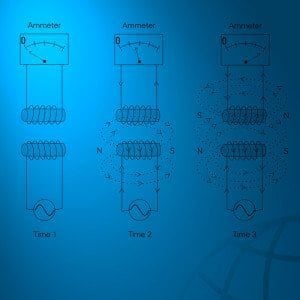
Electromagnetic Attraction
The top and bottom electromagnets share opposite polarities. And because opposite poles attract, the top electromagnet will follow the bottom when it moves. This electrical principle is a prime factor in the operation of AC motors.

Learn More About AC Motors
We hope this guide on AC motor magnetism and electromagnetism has helped you to better understand part of how electric motors work. If you want to learn more, check out our other resources on AC motor terminology, AC motor construction, and how to read electric motor nameplates.


